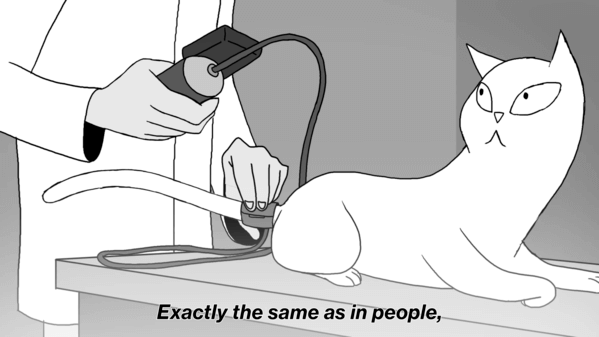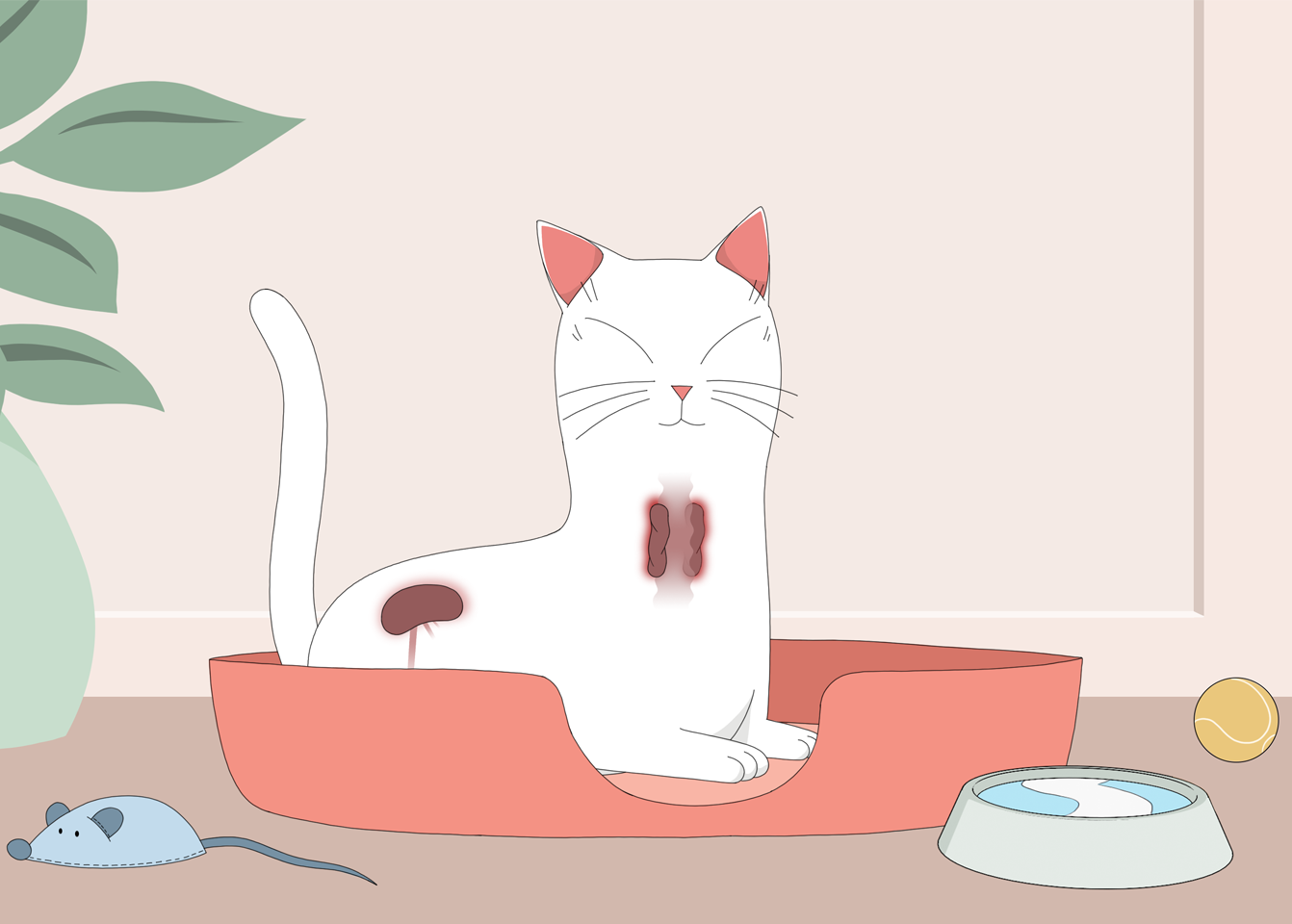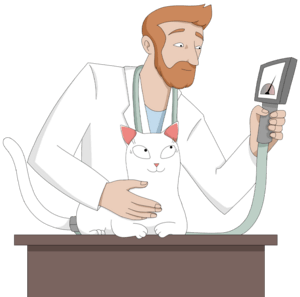
Everything you need to know about high blood pressure in cats
We probably all know someone who suffers from high blood pressure (or hypertension to use the technical term), but did you know this problem can also affect our feline companions?
However, in humans, hypertension is usually regarded as a primary disease (not caused by an obvious underlying disease) whereas in the majority of cats, high blood pressure develops as a consequence of an underlying health condition.

What is feline hypertension?
The circulation of blood around the body is critical for life in both humans and animals. Not only does it carry nutrients and oxygen to the tissues and cells in the body, it also removes harmful waste products from the tissues and plays a vital part in regulating the body temperature.
For the blood to reach every organ and every part of our cat's body, it needs to be pumped through the blood vessels by the heart, and the force or pressure exerted by the pumping action of the heart is what we call blood pressure. When this pressure is persistently elevated (above normal), we refer to it as high blood pressure, or hypertension.
What causes hypertension in cats?
Where cats are diagnosed with high blood pressure, it is always important to look for an underlying disease. Occasionally in cats a cause cannot be found and here the high blood pressure is known as primary hypertension.
However, most cats are affected by what is called secondary hypertension. This is where the high blood pressure is associated with or caused by another underlying disease. In cats, this is most commonly:
- Chronic kidney disease, or
- Hyperthyroidism
Rarely, other diseases such as conditions affecting the adrenal glands (where there may be excessive productions of hormones such as cortisol, aldosterone or catecholamines) can also be behind it.

Which cats are at risk for developing hypertension?
Senior cats (cats over 7 years of age) are at greater risk of developing hypertension, which is why most vets recommend blood pressure measurements at all routine visits from 7 years of age onwards.
Cats diagnosed with any of the underlying conditions that can cause hypertension are also at higher risk, and so should also have their blood pressure monitored regularly, even if their disease is well-controlled.
What are the consequences of high blood pressure in cats?
Hypertension is often a 'silent' disease with no obvious signs early on. However, it is often progressive over time leading to severe and even potentially life-threatening problems.
Hypertension can cause damage to many different organs in the body, but there are four major organs (known as "target organs") where the damage is most commonly seen:
- the kidneys: high blood pressure can cause serious and irreversible damage to the kidneys. In humans it can be a cause of, or contribute to chronic kidney disease (CKD) and it is thought the same is true in cats.
- the eyes: hypertension is often a cause of bleeding into the eye itself and/or retinal detachment. Sudden onset of blindness is one of the most dramatic effects of high blood pressure in cats.
- the heart: thickening of the muscular wall of the heart is one of the effects of hypertension as the heart has to pump against a higher pressure in the blood vessels. This can affect heart function and efficiency.
- the brain: high blood pressure can cause damage to the brain and the central nervous system. Signs can vary but can include altered behaviour, depression or even seizures.
The risk of damage from hypertension will vary depending on a number of factors including how high the blood pressure is, how long hypertension has been present and also how well the individual cat tolerates high blood pressure. However, high blood pressure is a significant cause of disease and a major welfare issue in older cats.
How can hypertension be recognised?
Unfortunately, hypertension can go unnoticed for a long time, and signs may only show up after there has been significant damage to organs and loss of quality of life for the cat. This is why hypertension is often known as a “silent killer”.
Many cat parents do not realise there is a problem with their cat until he or she suddenly becomes blind, shows neurological problems or shows signs of relating to another underlying disease. Being observant and spotting early signs of disease (including any change of appetite, change of thirst and change of bodyweight) may allow the earlier diagnosis of hypertension and any underlying disease.
How is high blood pressure diagnosed in cats?
Hypertension is diagnosed through measuring your cat's blood pressure. Ideally, hypertension should be diagnosed as early as possible so that treatment can be given to prevent damage to vulnerable organs in the body. This is best achieved through regular (yearly or twice yearly) measurement of blood pressure in senior cats (those over 7 years old).
If your cat is stressed or anxious at the vet clinic, this can lead to a temporary increase in their blood pressure known as the ‘white-coat effect’. Vets have a number of strategies to minimise the effects of stress, and other possible interferences with blood pressure readings, which often include measuring blood pressure on more than one occasion.
How is blood pressure measured?
Your cat's blood pressure is measured by your vet just like your doctor would measure your own blood pressure!
The vet places an inflatable cuff around your cat’s leg or tail, and use a sensitive machine to detect the flow of blood.
By inflating the cuff and detecting the flow of blood as the pressure is released from the cuff, your vet will be able to get a blood pressure reading.
Just as in human medicine, a variety of different types of equipment are available to vets for this purpose.
How is hypertension treated?
As in humans, hypertension in cats is usually treated with daily medication to lower the blood pressure (so called 'anti-hypertensive' drugs). This allows control of blood pressure, and helps prevent or manage damage caused by the high pressure.
However, treatment recommendations will vary from cat to cat depending on any underlying cause of the hypertension, how high the cat’s blood pressure is, and if any organ damage has already occurred.
Diagnosing and treating any underlying disease is also essential, and, in a small number of cats, this may be able to resolve hypertension and mean anti-hypertensive therapy can eventually be stopped.

